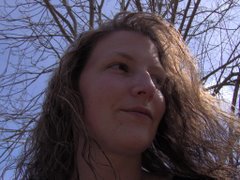Many of you are relatively new to the craft and were curious about the Sabbats and Esbats. This is my wheel of the Year (in other words its Celtic) But most traditions in Witchcraft share the same Sabbats - or Great Holidays - the meaning and celebration mught be a bit different but you'll get he idea.
The solar wheel of the year, which measures the Sabbats, was the basic framework on which ancient Celts hung their eternal Goddess and the reborn/dying God. The Goddess moved through the year - giving birth tot he God in Winter - to mating with the God in Spring - to birthing him/his son in harvest, to watching him die in Samhain. So she was the maiden through winter to spring. Was the mother in summer - and was the crone in the fall. Essentially the Sabbats measure the Solar year - the placement of the Earth in its orbit around the sun.
The main marking points are the solstices (Yule and Midsummer) and the Equinoxs (Ostara and Mabon). So think of your circle:
Yule is to the North,
Midsummer is to the South,
Ostara is to the East,
Mabon is to the West.
Now both on the wheel and in the calendar year,
Imbolg is 1/2 between Yule and Ostara (so its a 45 degree angle between North and East).
Beltaine is 1/2 way between Ostara and Midsummer (so it is a 45 degree angle between East and South).
Lughnasadh is 1/2 way between Midsummer and Mabon (so it is a 45 degree angle from South to West).
Finally Samhain is 1/2 way between Mabon and Yule (so it is a 45 degree angle from West to North.)
Conversly, the Esbats measure the Lunar year or where in orbit the moon is to the earth and therefore what shape is it in. So like the Solar Year the year actually begins with Samhain (Holloween) The moon months are as follows:
Samonios (seed time) - october 2 nd 1/2
Dumannios (Dark time) - november
Riuros (Cold time) - december
Anagantios (Trapped time) - january
Orgronios (Ice time) - february
Cutios (Winds Time) - march
Giamonios (Sprouting time) - april
Simivisionios (Time of brightness) - may
Equos (Horse time) - june
Elembios (Claiming time) - july
Edrinos (Time of justice) - august
Cantlos (Time of song) - september
Mid Samonios (Center of seed time) - 1st 1/2 of october
SO using this list for what each month stands for we derive our Ebats - holidays to recognize the profound - concepts like life and death or great change, etc.
Subscribe to:
Post Comments (Atom)



No comments:
Post a Comment